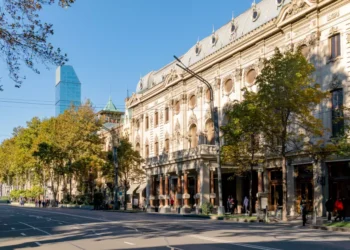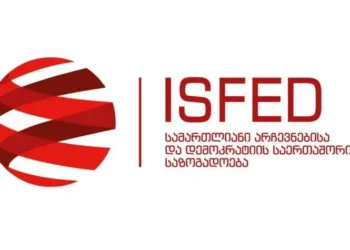Floodplain forests provide essential ecological services: they filter pollutants, improve water quality, prevent erosion, and protect rivers from flooding, all while supporting rich biodiversity.
Since 2019, SABUKO – the Society for Nature Conservation – has been working to restore landscapes and protect biodiversity across Georgia’s Iori Plateau, including the Chachuna Managed Reserve. Their ongoing project, ‘Kakheti Steppes: A Fragile Balance Between a Living Landscapes and a Future Desert,’ launched in 2022 with the support of the Endangered Landscapes & Seascape Program, aims to reverse ecological degradation and revive floodplain forests.
At the heart of this effort is a deceptively simple yet powerful tool: the gabion, or stone barrage. Installed across the Iori River in 2020, the structure gently raises water levels, allowing seasonal flooding of the terraces, and lifting groundwater. This process nourishes the floodplain forest, encourages natural regeneration, and provides vital habitats for fish and other wildlife.
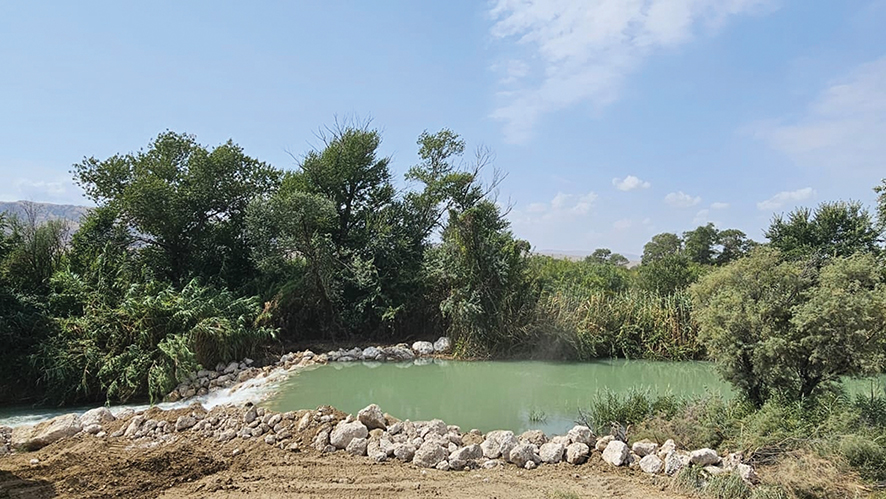
The results have been striking. In just a few years, the floodplain forest has shown clear signs of recovery—expanding in area, renewing its species composition, and improving conditions for biodiversity. The project has also helped restore fish habitats and food sources, reinforcing the ecological balance of the valley.
Building on this success, SABUKO has prepared a second gabion further downstream. The new structure, measuring 1.5–1.8 meters in height, was designed to counter deep erosion caused by the construction of the Dali Reservoir. By restoring natural water levels, it will ensure the long-term survival of characteristic floodplain species, such as oak and poplar, while helping curb invasive plants that threaten the ecosystem.
Researchers emphasize that the intervention is minimal, but the benefits are profound: raised groundwater, healthier soils, and a richer, more resilient forest ecosystem. Without such measures, erosion and deforestation would continue, weakening the Iori floodplain’s role as a refuge for wildlife and a vital migratory corridor.
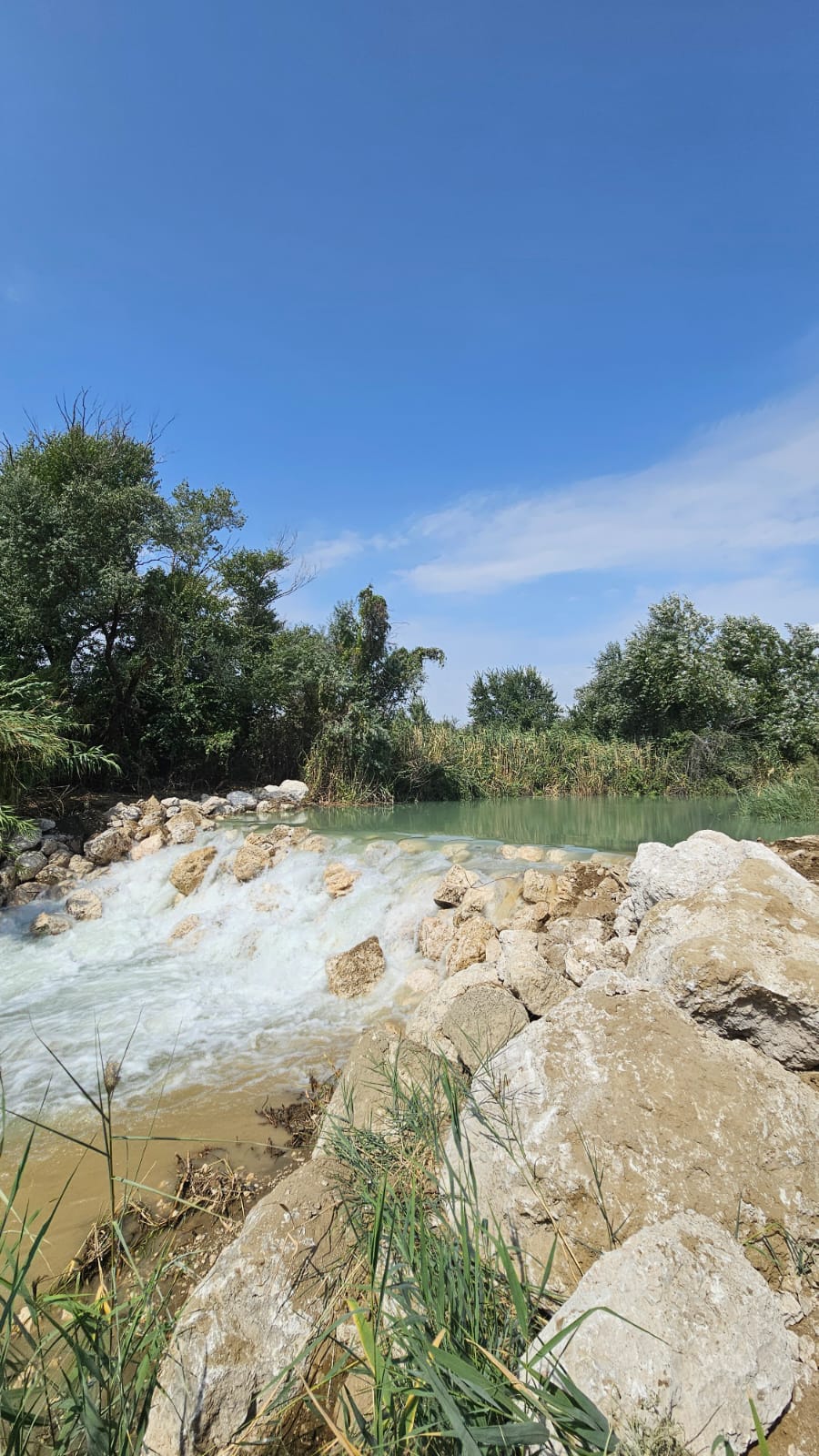
For SABUKO, the gabion is more than stone and wire—it is a symbol of how small, thoughtful interventions can heal entire landscapes, preserving Georgia’s natural heritage for generations to come.
To find out more details about the gabion’s role in restoring the landscape and conserving biodiversity in the Iori floodplain, as well as SABUKO’s current activities and future plans, GEORGIA TODAY spoke to Giorgi Chikorashvili, Natural Resources Program Manager.
Chikorashvili begins by outlining the origins and purpose of the initiative, explaining that the construction of the Dali Mountain Reservoir had drastically altered the Iori floodplain ecosystem.
Without such measures, erosion and deforestation would continue, weakening the floodplain’s role as a refuge for wildlife and a vital migratory corridor
“Since the construction of the Dali Mountain Reservoir, natural flooding no longer occurs in the floodplain forest, he notes. “The dam blocks the flow, and the release of water at a fixed level deepens the riverbed year after year. As a result, the river channel has sunk to the point where it can no longer physically flood its banks—even when the gates are opened and water is released for artificial flooding.”
“Consequently,” he adds, “neither flooding nor soil absorption and retention of water takes place.”
This ecological disruption prompted SABUKO to take action. Chikorashvili said their initial research revealed what was needed to begin restoring the natural processes.
“Our preliminary comprehensive studies identified what was needed to restore this process, and in 2020, we installed the first gabion,” he tells us.
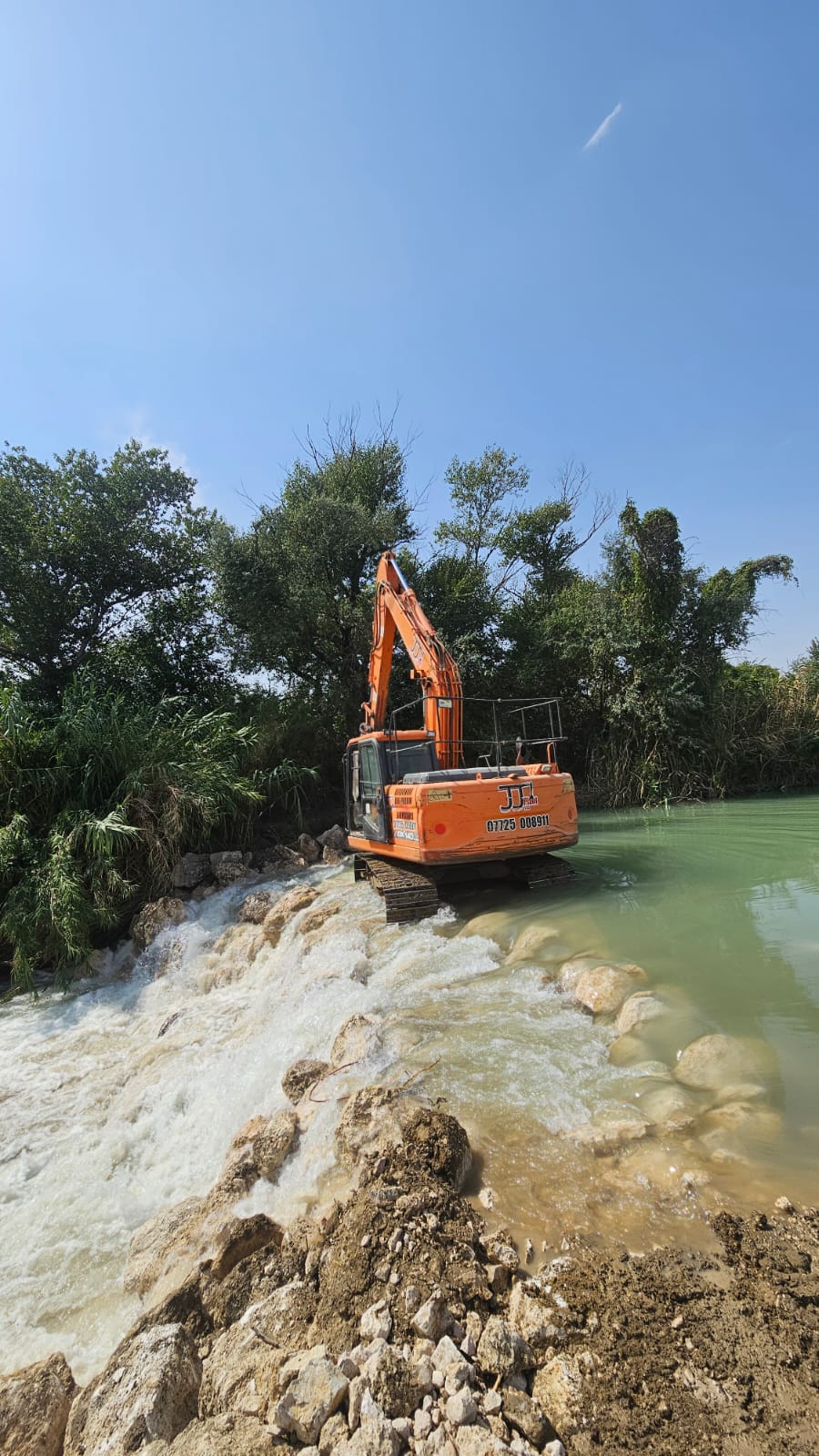
The results, he notes, were immediate and promising.
“The project proved highly successful, as confirmed by several studies, including those on ichthyofauna and forest conditions,” he explains. “For us, a certain degree of human intervention in the river is a tool to restore the floodplain forest. The gabion was created precisely for this purpose. By constructing the stone barrier, we were able to slow the river’s flow and raise its water level, allowing water to accumulate and flood the banks.”
Thanks to this intervention, natural processes began to return to the area.
“The first gabion functions effectively: today, 3 to 5 hectares of floodplain forest have already regained the natural processes characteristic of this ecosystem—processes that had been interrupted for years,” Chikorashvili says. “For floodplain forests, periodic flooding is vital, and we have successfully restored this function.”
Researchers emphasize that the intervention is minimal, but the benefits are profound
Encouraged by this success, SABUKO explored the possibility of building another gabion on the Iori River. Together with hydrologists and geologists, and with the involvement of the director of Chachuna Managed Reserve, Nodar Teteloshvili, they began by selecting a suitable site.
“Before construction, a forestry researcher joined our team to assess the potential impact areas once the water level rose. As part of the hydrologists’ project, each tree in the affected zones was examined individually—a remarkably detailed study. SABUKO continues to monitor the results step by step,” Chikorashvili tells us.
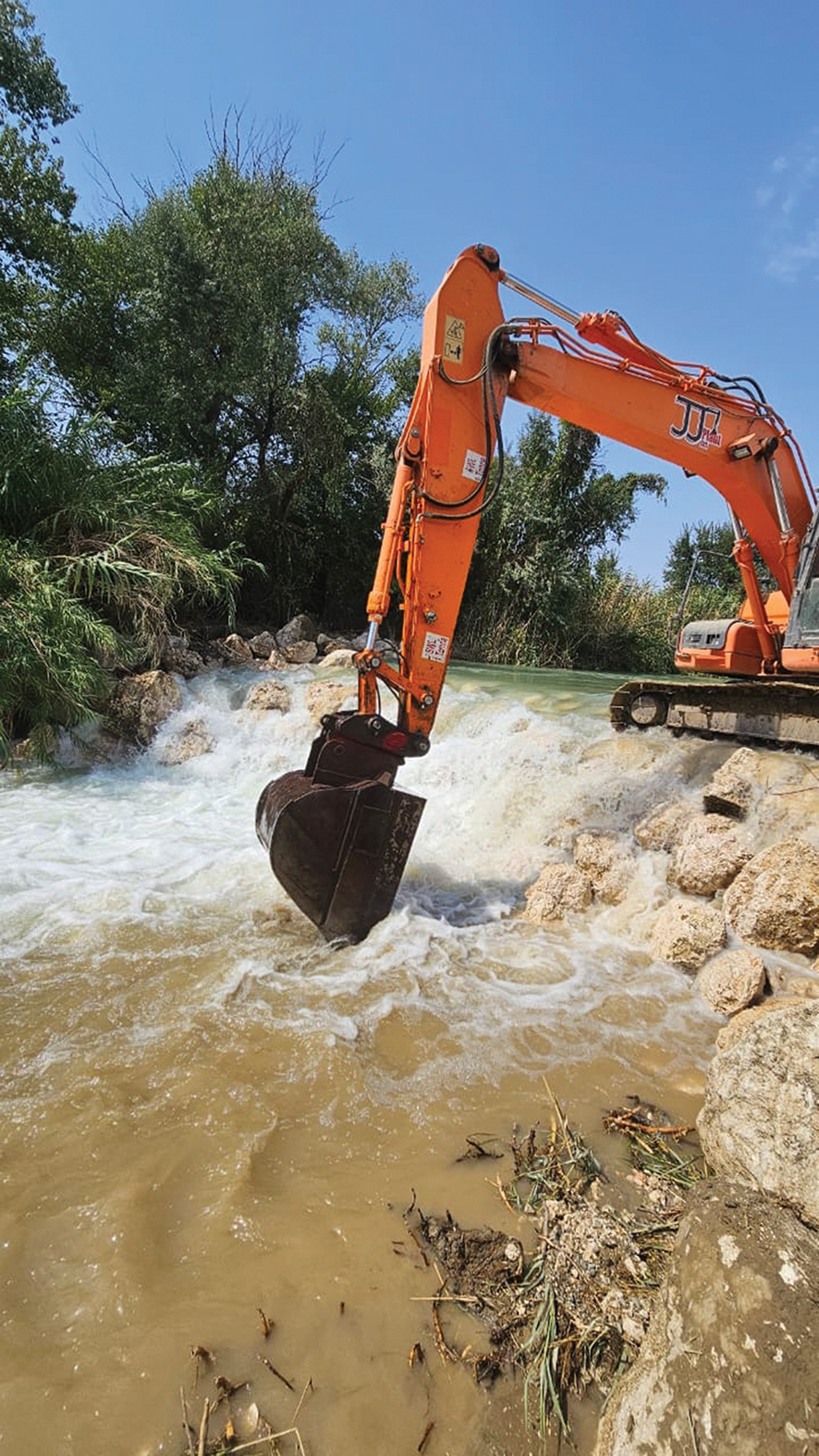
He emphasizes the close relationship between scientific research and on-the-ground practice.
“Since research and practice have worked hand in hand in our case, we are not stopping here!” he says.
Looking ahead, the SABUKO team is planning diverse activities to further restore the floodplain forest.
“Because these forests are of immense importance to the Chachuna Reserve—home to unique biodiversity, including rare species of animals and birds—we intend to identify additional potential restoration areas within the reserve,” he notes.
“Depending on the terraces, we will reintroduce species typical for floodplains. In doing so, we will carefully consider variables such as past activities, including fencing and the existing gabions, to ensure that future actions—be it planting, oak seeding, or other interventions—are sustainable, project-based, and deliver tangible results. Our forestry expert, Vasil Metreveli, lecturer at Ilia State University, will be professionally engaged in the process.”
At this stage, SABUKO has already installed two gabions on the Iori River, surrounded by floodplain forests that provide crucial habitat for numerous unique bird and animal species. These gabions have significantly improved bank flooding and made a substantial contribution to the restoration of the floodplain forest, which depends on periodic inundation for its survival.
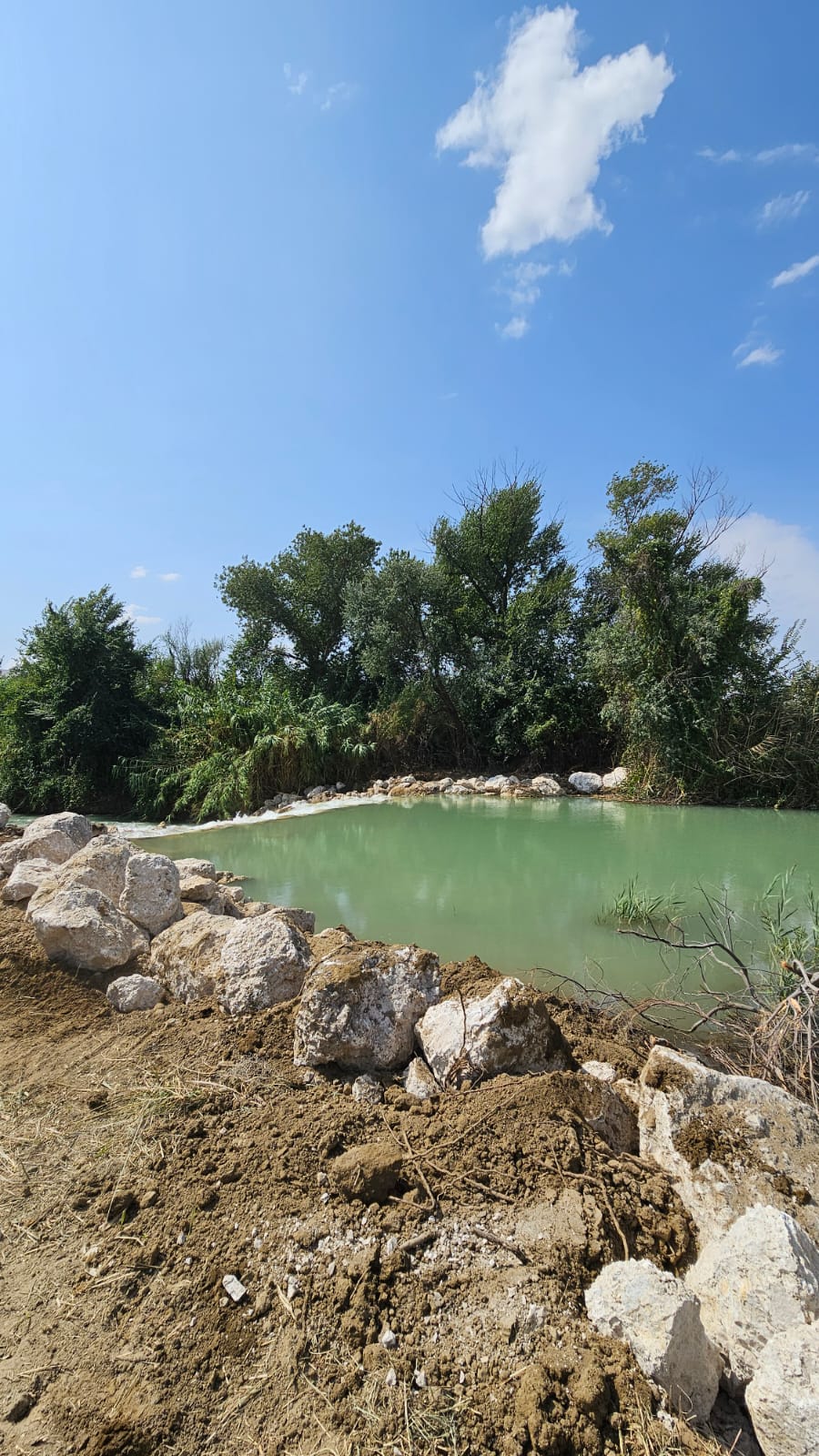
While no further gabion construction is currently planned, the project’s success and the ecological benefits it has brought suggest the value of assessing how many such barriers would be optimal for the Iori floodplain. In the near future, restoration activities such as planting and seeding will begin. As always, SABUKO will continue—energetically and with full dedication—its vital work of conserving and restoring nature in the Iori floodplains.
By Ana Dumbadze


